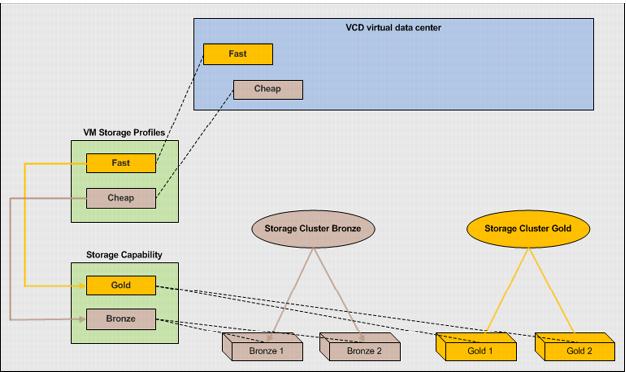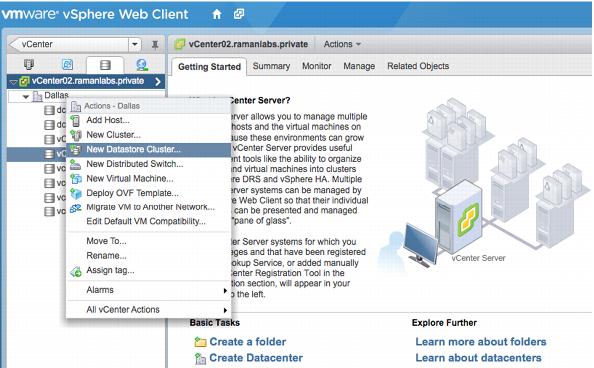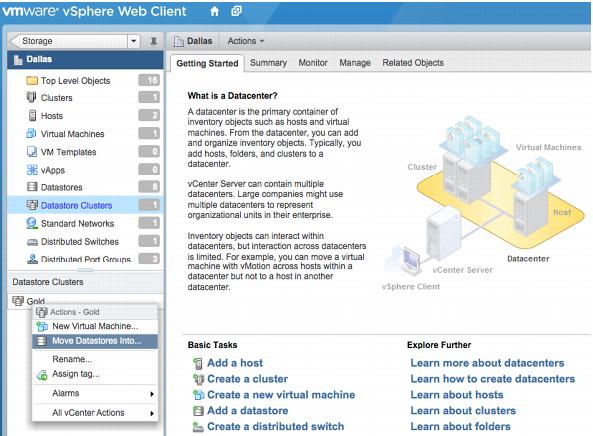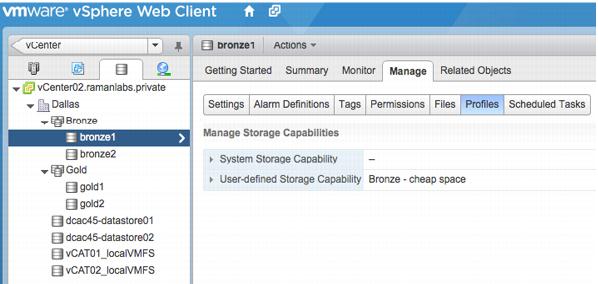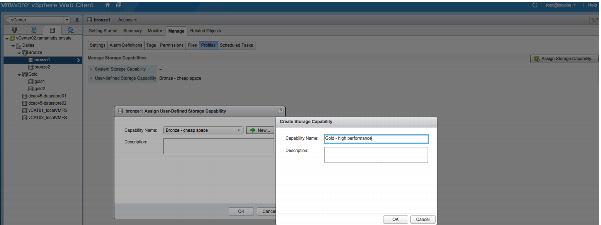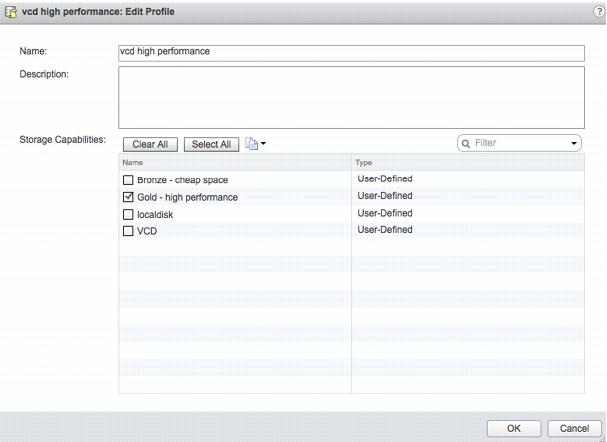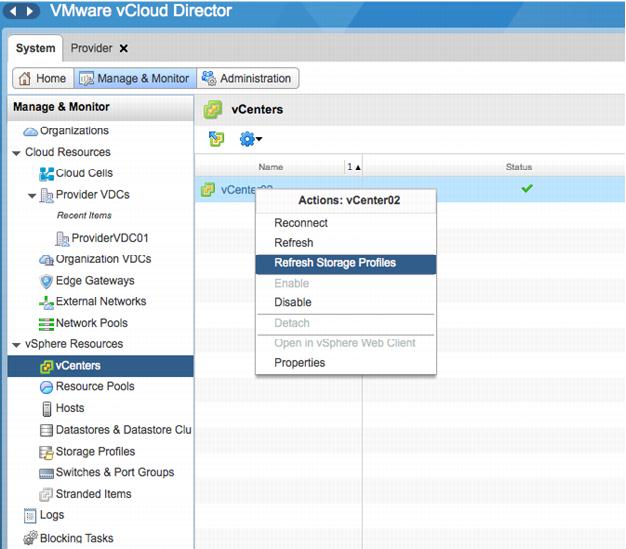5.2.3 Example
At a high level, the following figure illustrates the procedure for a vCloud administrator to produce and expose to the consumer different profiles of storage.
Figure 29. Overview of Storage Profiles Architecture
To produce and expose storage profiles to the consumer
1. Perform the following steps in the vSphere Web Client, as administrator:
a. Create datastore clusters and select the datastores.
b. Assign proper storage capabilities to the datastores.
c. Create VM Storage Profiles.
d. Declare which storage capability is associated to the VM Storage Profiles.
2. Perform the following steps in vCloud Director, as administrator:
a. Assign the desired VM Storage Profile to the provider virtual datacenter.
b. Create an organization virtual datacenter.
c. Determine a default Storage Profile for the organization virtual datacenter.
The user is able to consume these classes at vApp deployment time.
5.2.3.1. Implementation
As an example, create Storage DRS clusters in the vSphere domain. In this scenario, there are two datastores (bronze1, bronze2) backed by SATA storage, and two datastores (gold1, gold2) backed by FC storage. There are also other datastores, but they are not part of this implementation example.
To create Storage DRS clusters in the vSphere domain
1. Create a new datastore cluster.
2. Move existing datastores into the cluster.
3. For each of the four datastores, click the datastore and assign a storage capability.
4. If you have not defined a storage capability, create a new one as shown in the following screenshot. Assign the storage capability. In this example, the storage capabilities are named “Bronze – cheap space” and “Gold – high performance”.
NoteAll datastores in the same cluster must be assigned the same homogenous storage capability. Otherwise, the proper storage profile does not appear as available in the vCloud Director interface.
5. Create VM Storage Profiles. Each VM Storage Profile can have one or more storage capabilities. This example shows two VM Storage Profiles (“vcd economy space” and “vcd high performance”).
The “Bronze – cheap space” and the “Gold – high performance” storage capabilities are assigned to these VM Storage Profiles, respectively.
The following screenshot shows how the “vcd – high performance” VM Storage Profile has been configured.
6. Switch to the vCloud Director management portal and configure these VM Storage Profiles in the provider virtual datacenter.
Additional VM Storage Profiles, if available, are displayed in the Add Storage Profile window.
If a configured VM Storage Profile is not displayed in the list, verify that the proper storage capability has been consistently configured for each datastore in the datastore cluster. Although vSphere marks a cluster as Incompatible when you select a particular VM Storage Profile in the VM deployment wizard, vCloud Director does not show anything in the list unless it is Compatible.
7. A configured VM Storage profile might not be displayed because vCloud Director has not yet synced with the vSphere platform. This sync happens every five minutes but you can force a re-sync by clicking Refresh Storage Profiles.
8. Create an organization virtual datacenter for the organization.
NoteThis organization virtual datacenter was created for the marketing organization. There is a default storage profile defined for the organization virtual datacenter. This is the default selection for virtual machines when vApp Authors and vApp Users deploy virtual machines. Being able to change the default settings of a storage profile is a privilege that you can use when defining user roles. By default, this privilege is assigned to organization administrators.
9. When a vApp author deploys a two-tier vApp that requires different storage characteristics for each virtual machine in the vApp, the user can choose different storage profiles for each one.
These virtual machines reside on a cluster of datastores managed by vSphere, thus leveraging all of the advantages that the underlying platform provides.
